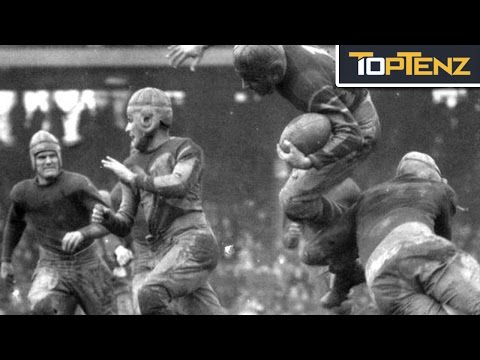What Is a BDH Injury in Sports?
Contents
- What is a BDH injury?
- How do BDH injuries occur?
- What are the symptoms of a BDH injury?
- How is a BDH injury diagnosed?
- What are the treatment options for a BDH injury?
- How can a BDH injury be prevented?
- What is the prognosis for a BDH injury?
- What are the long-term effects of a BDH injury?
- What are the risks of playing sports with a BDH injury?
- How can athletes return to play after a BDH injury?
If you’re a fan of sports, then you’ve probably heard of the term “BDH injury.” But what exactly is a BDH injury?
A BDH injury is a type of injury that can occur in any sport. It stands for “bone, joint, and/or ligament.”
BDH injuries can be caused by a number of things, including overuse, repetitive motion, and/or trauma.
Symptoms of a BDH injury include
Checkout this video:
What is a BDH injury?
A BDH injury is a type of hip injury that can occur in athletes. The acronym BDH stands for “bone-tendon-bone” and refers to the three tissue types that can be involved in this type of injury. This type of injury is most commonly seen in contact sports such as football or hockey, but can also occur in non-contact sports such as running or golf. Treatment for a BDH injury typically involves rest, ice, and physical therapy.
How do BDH injuries occur?
There are a few ways that a BDH injury can occur. The most common mechanism is a fall, where the person lands on their backside with their legs extended in front of them. This can cause the hip to dislocate, and the ball of the femur can pop out of the socket. Another way this injury can occur is through a violent twisting motion, such as when a football player is tackled from the side. This type of force can also cause the hip to dislocate.
What are the symptoms of a BDH injury?
The symptoms of a BDH injury vary depending on the severity of the injury. A mild BDH injury may only cause pain and swelling around the injured area. More severe injuries may cause bruising, deformity, and loss of function in the affected area.
How is a BDH injury diagnosed?
Bloody nose (epistaxis) is a common condition that usually occurs after a head injury. Trauma to the nose can cause small blood vessels in the lining of the nose to break and bleed. Most epistaxis can be controlled with direct pressure applied to the nostrils for 5-10 minutes. Epistaxis that cannot be controlled with direct pressure may require packing of the nostrils with gauze or other materials to stop the bleeding. If epistaxis persists or recurs, it may be a sign of a more serious injury and additional medical evaluation is required.
BDH injuries are typically diagnosed based on a history of trauma to the head followed by epistaxis. Physical examination may reveal bruising or tenderness around the base of the skull, as well as evidence of prior epistaxis. X-rays or computed tomography (CT) scan of the skull may be ordered to look for fractures or other injuries.
What are the treatment options for a BDH injury?
There are several treatment options for a BDH injury, depending on the severity of the injury. For milder injuries, ice and rest may be enough to allow the area to heal. More severe injuries may require more aggressive treatments such as physical therapy, steroid injections, or surgery.
How can a BDH injury be prevented?
There is no sure way to prevent a BDH injury. However, there are some things you can do to help lower your risk:
-Wear proper protective gear, such as a mouthguard, during all practices and games.
-Make sure your equipment, including your helmet, fits properly and is in good condition.
-participate in regular strength and conditioning exercises to help improve your overall fitness level.
-If you have any symptoms of a BDH injury, see a healthcare provider right away.
What is the prognosis for a BDH injury?
A BDH injury is a sports injury that affects the blood vessels and nerves in the head and neck area. It is a type of traumatic brain injury that can be caused by a direct blow to the head or neck, or by a sudden impact to the head or neck.
BDH injuries can range from mild to severe, and the prognosis for each individual will depend on the severity of their injury. Mild BDH injuries typically heal without any long-term effects, but more severe cases can lead to lasting problems, such as paralysis or cognitive impairments.
What are the long-term effects of a BDH injury?
A BDH injury, or brain-damaged hip injury, is a serious condition that can occur in athletes who participate in high-impact sports. The condition is caused by a direct blow to the head, which damages thehip joint and surrounding tissue. BDH injuries can lead to long-term problems, including chronic pain, joint instability, and loss of range of motion. Treatment typically involves rest and physical therapy to help the athlete regain strength and flexibility. In some cases, surgery may be necessary to repair the damage.
What are the risks of playing sports with a BDH injury?
There are a number of risks associated with playing sports with a BDH injury. The most serious of these is the possibility of further injuring the area, which could lead to long-term damage or even paralysis. Additionally, there is the potential for BDH injuries to cause lasting pain and discomfort. Finally, playing sports with a BDH injury may also increase the risk of developing other injuries, such as joint pain or muscle strains.
How can athletes return to play after a BDH injury?
Depending on the severity of the injury, athletes may be able to return to play after a BDH injury with proper rehabilitation. For more severe injuries, surgery may be necessary. The goal of rehabilitation is to help the athlete regain full range of motion and strength in the affected area.







